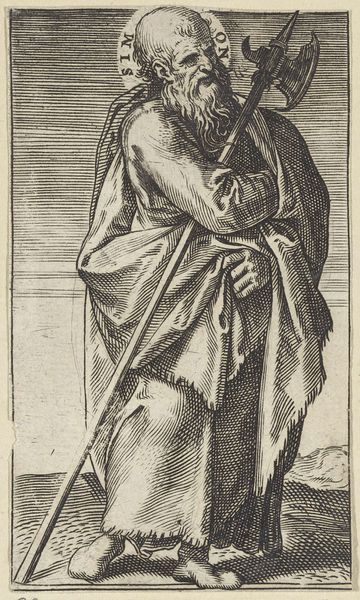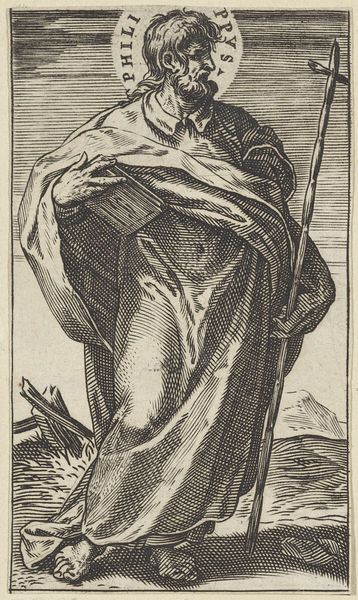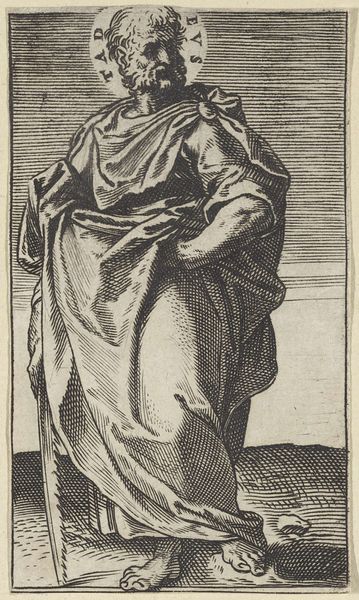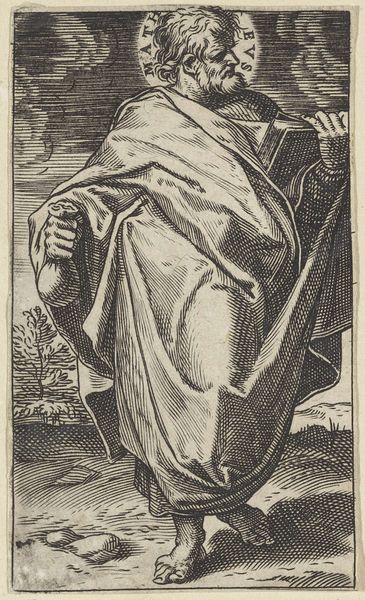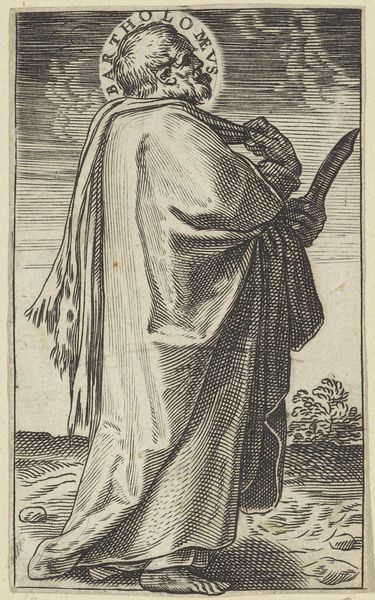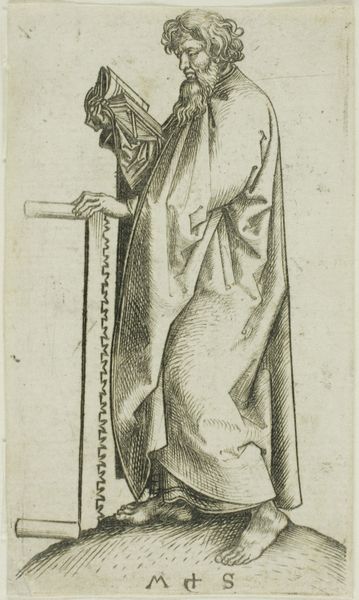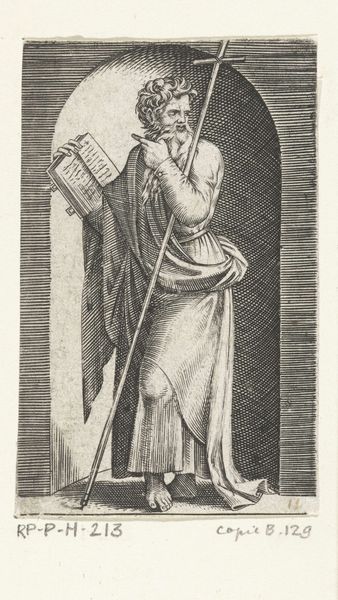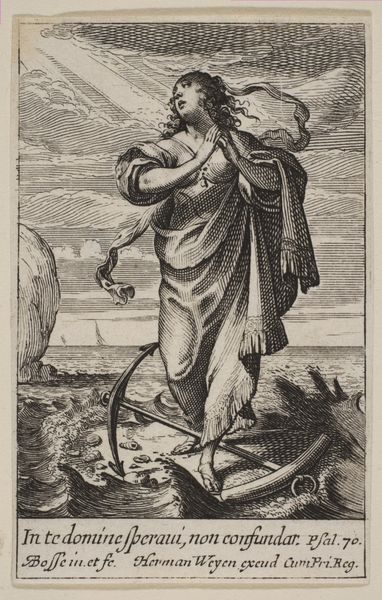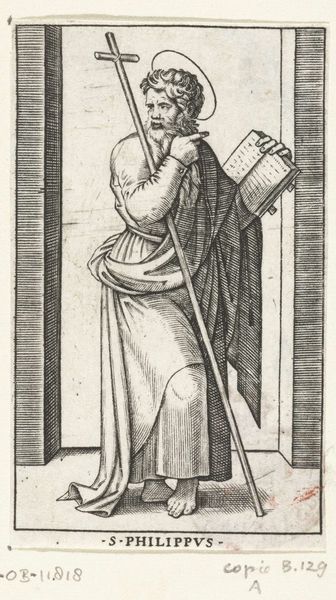
print, engraving
#
portrait
#
medieval
# print
#
figuration
#
portrait drawing
#
engraving
Dimensions: height 106 mm, width 62 mm
Copyright: Rijks Museum: Open Domain
Curator: What a stark image. The light and shadow are quite dramatic for a portrait. Editor: Indeed. This is Agostino Carracci's "Apostle Thomas with a Spear," dating from 1583. It's an engraving, currently housed at the Rijksmuseum. What strikes you particularly? Curator: Well, the labor involved in producing this engraving is evident in every line. Look at the density of hatching, particularly in the apostle’s robes, it speaks volumes about the repetitive, skilled handiwork required. The act of printing would’ve also facilitated its widespread dissemination, changing the means through which religious figures reached audiences. Editor: Absolutely. Consider too how prints like this circulated – as models for other artists, as devotional aids for private worship, or even as propaganda during the Counter-Reformation. The imagery would reinforce Catholic doctrine, but simultaneously reinforce the institution of the church itself. Note that the figure stands on something akin to modern pavement, perhaps insinuating the dominance of religion over more basic human interests like community building and engineering. Curator: The texture is wonderful as well; notice how the lines mimic the weight and fall of the fabric, almost convincing in its three-dimensionality. But also, look at the starkness of the negative space and the clear presence of the plate’s edges; it serves as a potent reminder of the material realities behind the image, drawing us closer to appreciating not only the artwork but the labor that generated it. Editor: And Thomas’ spear itself is quite fascinating when considering the broader political history. His typical symbol alludes to his martyrdom, furthering the Church's ability to present the trials of followers and thus inspire obedience and the rejection of heresy and schism. The contrast with his pointing finger, an expression of reason, encapsulates the duality of faith versus intellectual doubt that has always plagued organized religion. Curator: Precisely. Examining it through the lens of its creation, dissemination and inherent physical properties expands our appreciation for its cultural and historical context. Editor: And it reminds us that images, no matter how seemingly straightforward, are never neutral; they are always imbued with power. Curator: Definitely a thought-provoking work; viewing art from the perspective of craft offers insight that art history alone often obscures.
Comments
No comments
Be the first to comment and join the conversation on the ultimate creative platform.
